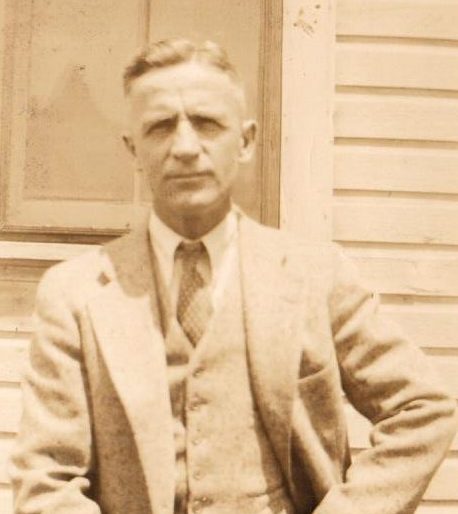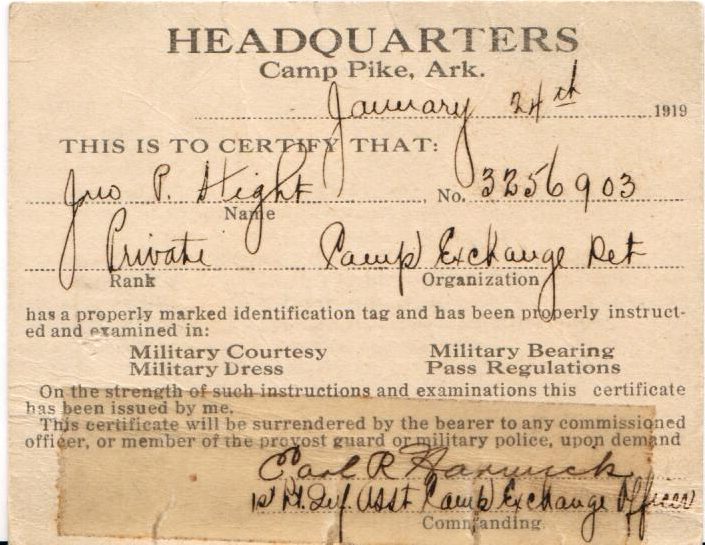calsfoundation@cals.org
The Maternal Line: A Genealogical Narrative
Over 20 years ago, as an undergraduate at the University of Arkansas at Little Rock, I took Arkansas History with C. Fred Williams. One of the course requirements was to trace your family history back three generations and write a narrative about those family members. The brilliance of this assignment was it required students to develop research skills while exploring their own personal history. Through census records, newspaper clippings, and oral history interviews, students learned the basics of good historical research.
Most students (if not all of them) traced their paternal line—father to grandfather to great-grandfather. But as with most assignments, I wanted to do something a little different. My maternal grandmother had died a few years before, and we had discovered old photos and papers while cleaning out her house. Also, my great-aunt (my maternal grandmother’s sister) was still living and had a new interest in genealogy and family history. So I embarked on a journey through my family history on the female side.
*****
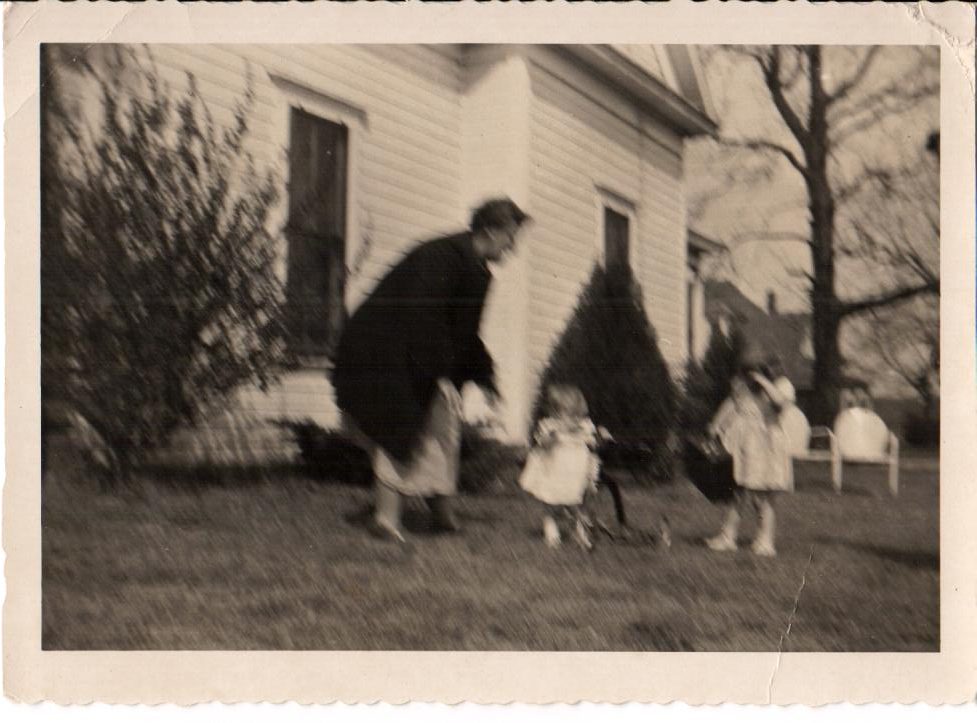
My great-grandmother was Clyde Hamm. She was born on July 2, 1893, to a prominent family in Mulberry, Arkansas. Her father, Dix Hamm Sr., was a well-respected businessman, as evidenced in the headline for his obituary in the Fort Smith Times-Record dated September 30, 1935: “Funeral Service of Widely Known Man Held Sunday: Large Crowd Attends Final Rites for Dix Hamm at Mulberry Church.” When Rosa Hamm, Dix’s wife, was pregnant with their fourth child, Dix was determined that this child would be a boy and so he selected the name Clyde. A baby girl was born and given the name Clyde anyway.
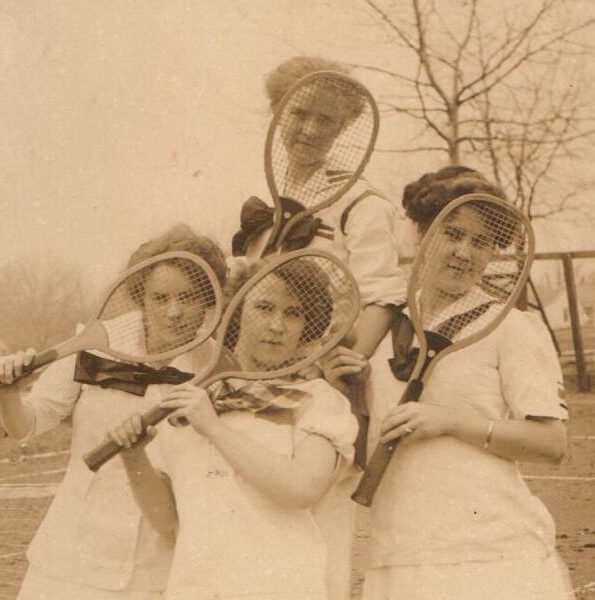
The little girl with a boy’s name grew into a beautiful young woman. A description of Clyde from the Fort Smith Times-Record dated June 13, 1917, of her wedding day reads as follows: “The bride, a petite brunette of the distinctively French type of beauty, wore her traveling suit of pearl grey, which was designed on strictly tailored lines.” Family photographs confirm this description of an elegant brunette of the early twentieth century. The wedding announcement also noted that “the bride spent a number of seasons in Van Buren and was a social favorite.”
Clyde Hamm married John Patterson Hight of Mulberry, Arkansas. A veteran of World War I (although he never saw action), John Hight was a bookkeeper by profession. According to his Honorable Discharge papers from the U.S. Army, John served as a bookkeeper at Camp Pike, Arkansas, during World War I. After the war, John worked for Clyde’s father in his dry goods business. According to an oral history interview conducted with their daughter Joyce Hight Hawkins on September 3, 1999, the marriage of John and Clyde Hight was a happy one. The couple lived in a house on Main Street in downtown Mulberry, just blocks from where John eventually opened his own retail business. The Hights had three children: Jack, Joyce, and Joan. Both Clyde and John lived in Mulberry until their deaths in 1965 and 1969, respectively, as listed on their cemetery markers in New Cemetery in Mulberry.
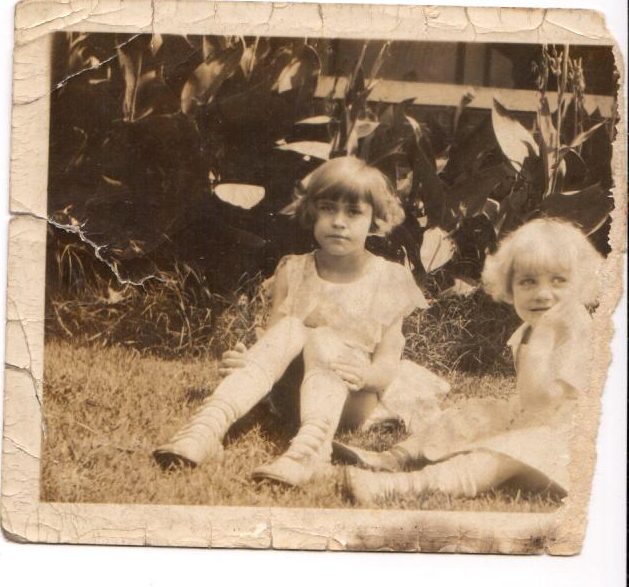
The Hights’ youngest child, Joan, was born on March 16, 1925 (according to her driver’s license). Although her name is spelled “Joan,” it is pronounced like Joann. Joyce Hight Hawkins, Joan’s older sister, recalls her mother telling people that she did not like the way the name “Joann” looked when written but she liked the way it sounded. There is almost a five-year difference in age between the two sisters, and little is known about Joan’s childhood other than what her sister is able to remember. When asked what Joan was like as a child, Joyce responded with a laugh and said, “She was a brat.”
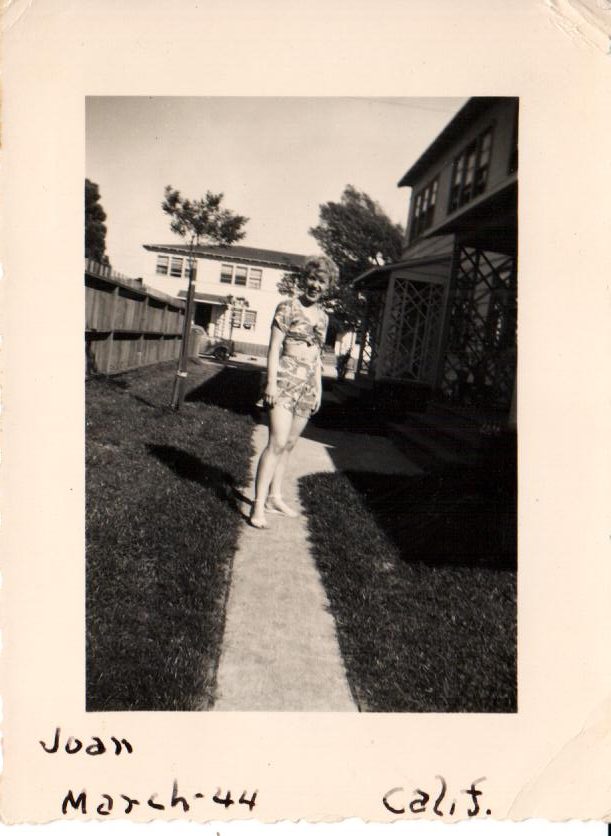
After graduating from Mulberry High, Joan joined her older sister in California. Joyce had married Joe Hawkins of Ozark, Arkansas, and Joe joined the U.S. Navy during World War II. Joyce and Joan went to California in search of work. Joyce worked as a police officer and then an accountant, and Joan did factory work. After the war, the sisters returned to Mulberry. Joyce and her husband left the state soon after his return from overseas.
Joan remained in Crawford County and become engaged to a young man named Clyde. Joyce could not recall the young man’s last name, but she remembers that her mother and father approved of the match. Joan, however, said that she had decided she could not marry a man with flat feet. The engagement ring was left with Joan’s mother (Clyde Hamm Hight) and when the young man came to pick Joan up to go to the courthouse, Joan was gone. Joan later married John Harold Alston and lived out her life with him.
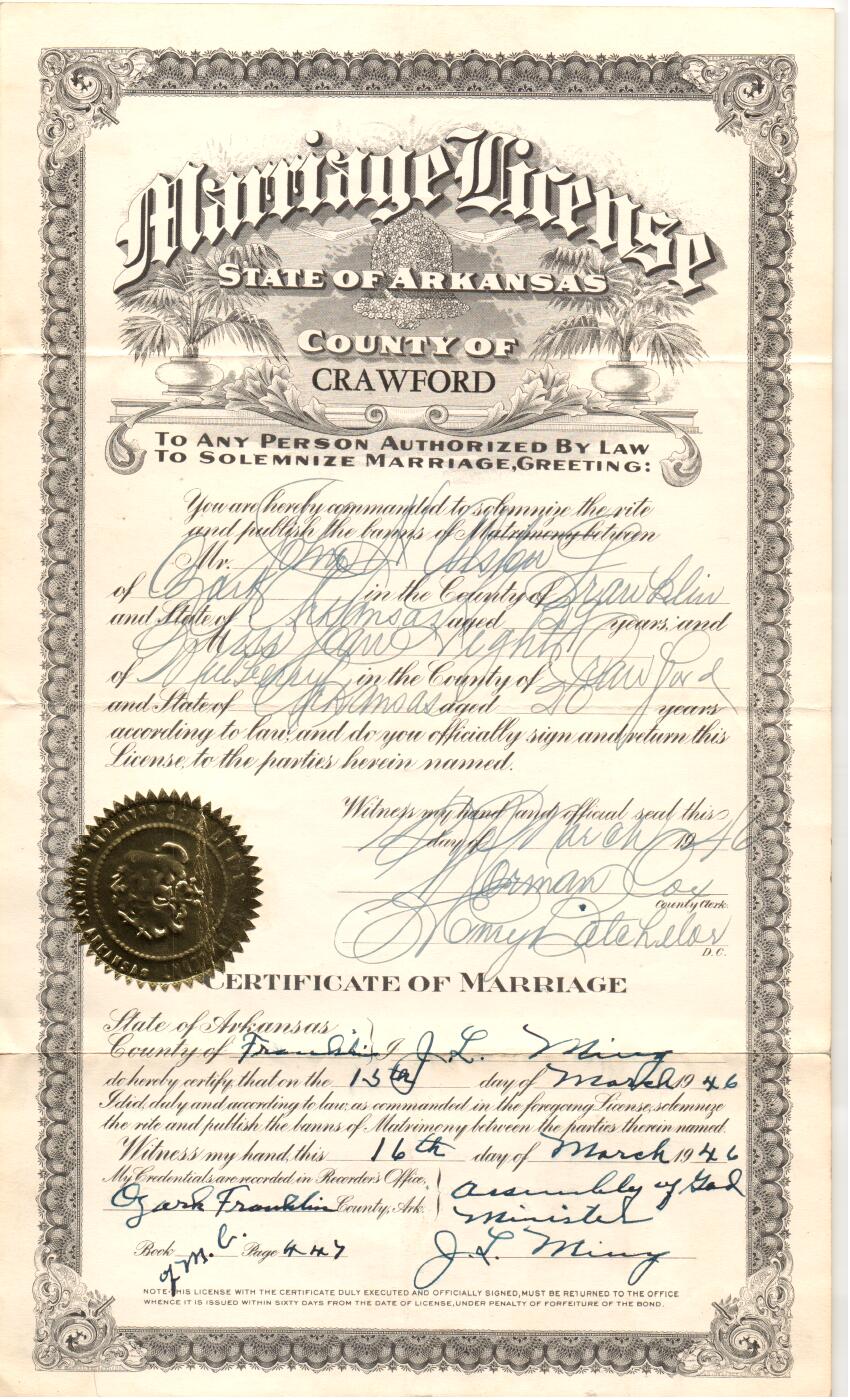
It is uncertain how Joan and John Harold met, but it can be assumed that they would have had some mutual friends. Ozark and Mulberry were neighboring towns. Dances and socials were probably attended by young people from both towns and other surrounding areas. They were married on March 15, 1946, by J. L. Missy in Ozark (Marriage License, Crawford County, AR, Page 426 of Book W, March 18, 1946). The couple had eloped, and Joan’s parents had no idea what she had just done. After the marriage ceremony, Joan apparently returned to Mulberry and her parents’ home as if nothing had happened. Joyce Hight Hawkins recalls hearing that her father went looking for John Harold with a gun once he found out.
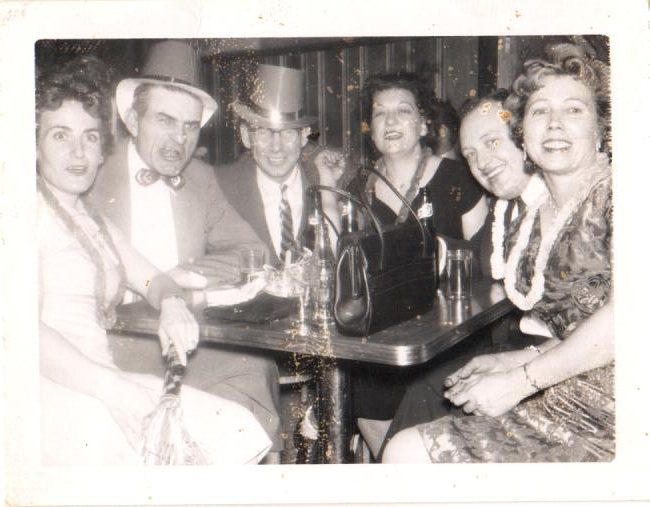
Soon after the marriage, the Alstons moved to Detroit, Michigan, so that John Harold could find work. They lived in the Detroit area with their two daughters, Phyllis and Linda, until 1961. John Harold worked as a machine repairman for Detroit-Wayne County Tool and Die and was a member of the United Automobile, Aircraft, Agricultural Implement Workers of America (UAW-CIO). During the family’s time in Detroit, John Harold purchased some land in Ferndale, Michigan (a suburb of Detroit) and built a home. Located at 1834 Romeo Street, the home is described as a one-and-a-half-story, one-family residence with an asphalt shingled roof and a full basement.
Michigan was the Alston family’s home during the school year but in the summers, Joan and their two young daughters returned to Mulberry to stay with her parents. In the summer of 1961, John Harold drove from Michigan to Arkansas as he had numerous times before to retrieve his family; the one difference this time was that they were not returning to Ferndale. He had sold all the non-essential belongings, sold the house, and loaded the car with what was left. John Harold began living in Ozark, while Joan and the girls moved to Little Rock for a time so the girls could attend the School for the Blind.
*****
So how did I assemble all this information? Well, back in the day, I had to go look up census records and newspaper obituaries on microfilm. I also did oral history interviews with my maternal great-aunt, Joyce Hight Hawkins, and my mother, Phyllis Alston Register. We also visited three cemeteries—Highland Cemetery in Ozark, Arkansas; New Cemetery in Mulberry, Arkansas; and the Hight Family Cemetery in the middle of nowhere Crawford County, Arkansas—to collect dates from headstones.
Today, with the magic of technology, I’d search FamilySearch (no library access needed) and head to the library to use HeritageQuest, or Ancestry for Census Records and City Directories, and then explore the Genealogy Databases from home using my library card. I’d look at Newspapers.com or NewspaperARCHIVE for newspaper clippings (to get started on NewspaperARCHIVE, go to the CALS homepage, www.cals.org, and search Website and Events using the search term newspaper. It will be one of the first several databases listed. Use your library barcode to set up an account). And I’d visit FindAGrave.com or BillionGraves.com to find my relatives’ headstones without stepping foot in a cemetery.
But one of the best resources I had was the boxes of papers and photographs from my maternal grandmother, Joan Hight Alston. When I was growing up, my maternal grandparents didn’t have anything old around the house. They built a new house in Ozark in 1979 and filled it with brand-new furniture. All the pictures on the walls and side tables were contemporary portrait studio–style photographs. But when my grandparents died, the job of cleaning out the house fell to me. In a hall closet behind a number of hat boxes were a bunch of brown paper sacks. Inside were newspaper clippings (complete with newspaper name and date of publication) and old family photos. It was a treasure trove of my family history.
The names and dates and locations in your family history can be the starting point, but without the photos and papers and stories, the story is incomplete. I wish I had an oral history with my grandfather. He was a fascinating figure. He had a hard early life and only a 6th-grade education but could do almost anything that involved skilled labor. My grandmother was a quiet, nervous person who would have shied away from a microphone and tape recorder. But I would love to know more about her factory work in California during the war, as well as her reasons for picking my grandfather to marry instead of the young man she left “almost at the altar.”
The women in our lives have important stories to tell. Take the time to talk to your mother, grandmother, and aunts. Fill in the gaps in your family stories.
*****
- Learn more about oral history and how to conduct your own oral history interviews.
- Find out how to start your personal archiving journey.
By Heather Register Zbinden, Roberts Library outreach coordinator
